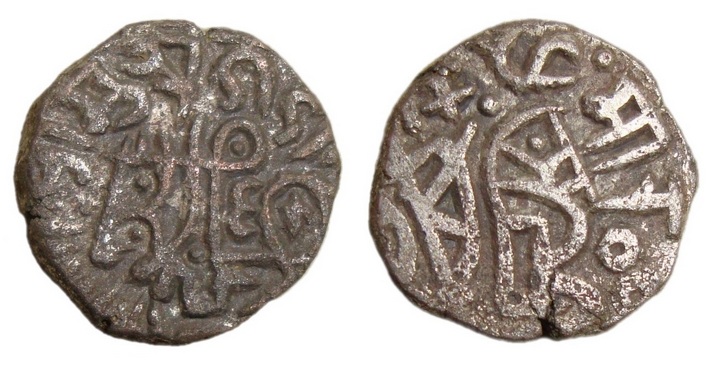Muiz ud din Bahram on:
[Wikipedia]
[Google]
[Amazon]
Muiz ud-Din Bahram (; 9 July 1212 – 15 May 1242) was the sixth sultan of the Mamluk Dynasty.
 After the death of Razia Sultan (1240) the forty chiefs decided to put Iltutmish's third Son Bahram shah on the throne. He was put on throne on 21 April 1240 at Lal Mahal but after some time the 40 chiefs decided to take all the power of Bahram shah in their hands. At that time the Minister was Muhajbuddin, so in this way there was three rulers of that dynasty. Muiz ud din Bahram built a
After the death of Razia Sultan (1240) the forty chiefs decided to put Iltutmish's third Son Bahram shah on the throne. He was put on throne on 21 April 1240 at Lal Mahal but after some time the 40 chiefs decided to take all the power of Bahram shah in their hands. At that time the Minister was Muhajbuddin, so in this way there was three rulers of that dynasty. Muiz ud din Bahram built a
India Through the Ages
(archived) Sultans of the Mamluk dynasty (Delhi) 1242 deaths Indian Sunni Muslims 13th-century Indian monarchs 13th-century monarchs in Asia 13th-century Mamluk sultans 1212 births {{India-royal-stub
Life
He was the son of Shams ud din Iltutmish (1211–36) and the half-brother of Razia Sultan (1236–40). While his sister was imprisoned in Bathinda by subedar Malik Altunia (both Altunia and Bahram Shah planned conspiracy against Razia Sultan) he declared himself the king with the support of forty chiefs. Even so, during Muiz ud din Bahram's two years as king, the chiefs that had originally supported him became disordered and constantly bickered among each other. It was during this period of unrest that he was murdered by his own army in 1242 (died 15 May 1242). After his death, he was succeeded by his nephew Ala ud din Masud, a son of his half-brother Rukn ud din Firuz.Ögedei Khan
Ögedei Khan (also Ögedei Khagan or Ogodei; 11 December 1241) was the second Khan (title), khan of the Mongol Empire. The third son of Genghis Khan, he continued the expansion of the empire that his father had begun.
Born in 1186 AD, Öged ...
of the Mongol Empire
The Mongol Empire was the List of largest empires, largest contiguous empire in human history, history. Originating in present-day Mongolia in East Asia, the Mongol Empire at its height stretched from the Sea of Japan to parts of Eastern Euro ...
appointed Dayir commander of Ghazni
Ghazni (, ), historically known as Ghaznayn () or Ghazna (), also transliterated as Ghuznee, and anciently known as Alexandria in Opiana (), is a city in southeastern Afghanistan with a population of around 190,000 people. The city is strategica ...
and Menggetu commander in Kunduz
Kunduz (; ; ) is a city in northern Afghanistan and the capital of Kunduz Province. The city has an estimated population of about 268,893 as of 2015, making it about the List of cities in Afghanistan, seventh largest city of Afghanistan, and the ...
. In winter 1241 the Mongol force invaded the Indus valley and besieged Lahore. Dayir died storming the town, however, on 30 December 1241, and the Mongols butchered the town before withdrawing from the Delhi Sultanate
The Delhi Sultanate or the Sultanate of Delhi was a Medieval India, late medieval empire primarily based in Delhi that stretched over large parts of the Indian subcontinent for more than three centuries.
.Islamic Culture Board-Islamic culture, p.256 The sultan was too weak to take step against them. The "Forty Chiefs" besieged him in the White Fort of Delhi and put him to death.
 After the death of Razia Sultan (1240) the forty chiefs decided to put Iltutmish's third Son Bahram shah on the throne. He was put on throne on 21 April 1240 at Lal Mahal but after some time the 40 chiefs decided to take all the power of Bahram shah in their hands. At that time the Minister was Muhajbuddin, so in this way there was three rulers of that dynasty. Muiz ud din Bahram built a
After the death of Razia Sultan (1240) the forty chiefs decided to put Iltutmish's third Son Bahram shah on the throne. He was put on throne on 21 April 1240 at Lal Mahal but after some time the 40 chiefs decided to take all the power of Bahram shah in their hands. At that time the Minister was Muhajbuddin, so in this way there was three rulers of that dynasty. Muiz ud din Bahram built a mosque
A mosque ( ), also called a masjid ( ), is a place of worship for Muslims. The term usually refers to a covered building, but can be any place where Salah, Islamic prayers are performed; such as an outdoor courtyard.
Originally, mosques were si ...
in Delhi during his reign.
See also
* Mamluk dynasty *History of India
Anatomically modern humans first arrived on the Indian subcontinent between 73,000 and 55,000 years ago. The earliest known human remains in South Asia date to 30,000 years ago. Sedentism, Sedentariness began in South Asia around 7000 BCE; ...
* Islamic history
* List of Indian monarchs
* Bathinda
References
External links
India Through the Ages
(archived) Sultans of the Mamluk dynasty (Delhi) 1242 deaths Indian Sunni Muslims 13th-century Indian monarchs 13th-century monarchs in Asia 13th-century Mamluk sultans 1212 births {{India-royal-stub